20 years later, the story of Lindenwood’s only homicide
Photo by Kat Owens
Photo by Kat Owens
April 20, 2018
Map created by Lindsey Fiala
Video by Ashley Higginbotham
ASHLEY HIGGINBOTHAM | Reporter
Countless Lindenwood students travel the concrete sidewalk between the Welcome Center and the white water tower every day, but few know its significance.
Twenty years ago this month, it was the scene of one of the grisliest murders in St. Charles’ history. That spring Sunday, Parents’ Weekend was in full swing on Lindenwood University’s campus.
A student heading to work that morning discovered the partially nude body of a girl. The victim had been sexually assaulted, stabbed to death and decapitated.
Police discovered her head a few hours later in a portable bathroom on the campus soccer fields.
Speculation about who committed the murder put students on edge and dominated dining hall conversations.

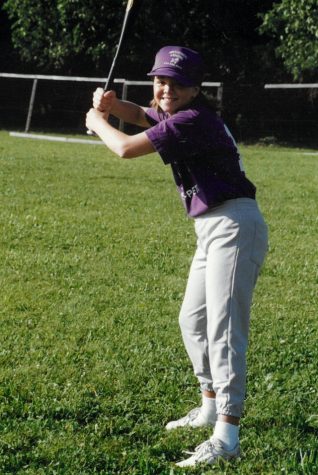
Photo provided by Kathleen Higgins
Police conducted roadblocks to try to shake loose any information. They called in bloodhounds and showed images of a bloody bedsheet on television.
Then came the tip that broke the case and stunned the community.
The victim, Tiffany Jaylene Sabourin, 13, had been lured onto campus and murdered by a Lindenwood student “looking for somebody to kill,” police said.
A gruesome discovery
News of the crime reached former St. Charles Police Capt. Patrick McCarrick about 6:30 a.m. on April 26, 1998.
A student walking to work at Pizza Hut had spotted the body and contacted campus security.
“He thought it was some kind of joke or a mannequin or a prank,” McCarrick said. The campus already had been busy because of Parents’ Weekend and a variety of athletic competitions. But a few hours after the discovery, Lindenwood’s campus was crawling with more than 40 detectives.
“It was a big deal for the university because it’s bad for business,” McCarrick said. “That’s not what you want to hear is happening at your kid’s school.”
In an effort to identify the victim, detectives took a photo of her head and showed it to students in the cafeteria.
“It was a cleaned-up picture; it didn’t show that her head was cut off or anything like that,” McCarrick said. “We had to know who that girl was.”
When none of the students recognized her, McCarrick said police considered releasing the photo to the media. However, they didn’t have to. By nightfall, Tiffany’s mother called and gave a description that matched the body.
‘A beautiful girl’
Tiffany was a seventh grader at Wentzville Middle School where she was well liked, said her friends.
“She was a friend, a sister, a daughter … part of so many people’s lives and was taken away too soon and in a way most people wouldn’t imagine,” friend Mellissa Bierman said.
The consensus from those who knew her was that she was kindhearted.
“She was a really nice person. She was very friendly. We were in the same classes in sixth and seventh grade, and we loved it,” friend Megan Aumiller said.
They also said she was never short of fun times.

Photo provided by Donna Craig

“We used to always walk home from school, and Tiffany was the loudest one,” friend Donna Craig said. “We would walk to McDonald’s after school singing stupid songs, like ‘Hoochie Mama’ from the movie ‘Friday,’ so definitely songs we weren’t allowed to sing.”
Her stepmother, Kathleen Higgins, said Tiffany was never mean or angry.
“She had the cutest little laugh and the prettiest smile and was a beautiful girl,” she said. “You could tell she had this charisma about her.”
Tiffany had four half-brothers and two half-sisters. She loved math, but lived for softball.
“She would smile so big whenever she got to bat because she knew that she would hit every time,” Higgins said.
Higgins drove from Troy, Missouri, twice a week and picked Tiffany up for softball practice.
“She would always call and say, ‘You are going to pick me up, right? You are not going to miss me, right?’ That was her way to get away,” Higgins said.
Tiffany did have a bit of a mischievous streak, Higgins said.
“In her short lifespan, she had stolen a couple cars and wrecked them,” she said. “It was almost like she wanted to get away with something, but she never did get away with anything because she always got caught.”
Bloodhounds and a clue
Almost a week after the gruesome discovery of Tiffany’s body, no arrests had been made and students and the community were frightened. Newspaper accounts from the time said students walked in pairs around campus.
Richard Reighard, associate professor of mass communications, said then-President Dennis Spellmann wanted no media coverage.
“It was almost comical to watch Channels 2, 4, 5, all of the trucks circling up Kingshighway and down First Capitol, trying to turn in,” he said. “They had maintenance blocking the entrance and telling the TV trucks to turn around.”
The tactics didn’t deter reporters, who found other means.
“When students would drive out [off campus], the reporters would flag them down in their cars trying to get someone to talk to them,” Reighard said. “A few students were like, ‘I’ll talk to you, but you can’t use my name,’ and they didn’t want to be on TV because they were afraid the president was going to get to them for daring to break the blackout on publicity.”
Advertising and public relations instructor Patrick Longo said he lived near Blanchette Park at the time of the murder and worked as a server and bartender at the old Grappa Grill, which is now Hotshots Sports Bar & Grill on Highway 94.
“Every night when I was driving home, they had roadblocks out and were stopping cars,” Longo said. “And they were asking for information, but also telling people what was going on. I remember the detective having a manila envelope and flipping through photos of the actual crime scene and of the girl’s head.”
Longo lived with his 4-year-old daughter at the time and said he was afraid to even go outside to smoke a cigarette.
“It was scary but also weird because it’s St. Charles; it doesn’t happen in St. Charles,” he said.
Police investigated about 400 leads, but none had panned out. Final exams were coming up, and police worried about potential witnesses or suspects leaving the state.
“We were convinced that the university had some relationship to the crime,” McCarrick said. “But you can’t say to all the students, this is not television, you can’t leave town until you’re done with this.”
That’s when a canine officer asked McCarrick if he ever thought of using bloodhounds. Soon after, K-9 Chester from Dearborn, Michigan, and K-9 Samantha from Gary, Indiana, arrived.
“It had rained hard every day,” McCarrick said, “I thought maybe that would interfere with the way the dogs work, but I found out that was not a problem.”
The dogs picked up Tiffany’s scent from gym clothes police had retrieved from her school locker. Chester went first. He led his handler from the El Matador Apartments on Cunningham Avenue all the way to Pfremmer Pond where he keyed in on a specific corner of it, McCarrick said.
Police took Samantha out on a boat, and when police reached the corner of the pond, “she wanted to jump in,” McCarrick said.
Police brought divers in, and they recovered the bedsheet.
“They smelled that girl’s scent on that sheet from a mile away, over a hill, a week later, under five feet of water and it rained every day,” McCarrick said.
Within two days, police decided to release a photo of the sheet to the 5 p.m. news broadcast, and by 5:30 p.m., they had a call that would break the case.
“This is my roommate”
Jason Richter was in his dorm room — Cobbs Hall, Room 120 — when his girlfriend called him and told him to turn on the news. Police were going to be showing some evidence in the murder case.
Richter was alone because his roommate, Jason Shipman, hadn’t been around since Tiffany’s body was discovered.
As he talked to his girlfriend, the TV showed a picture of the sheet that had been used to transport Tiffany’s head.
“I was like, that’s a weird-looking sheet,” he said. “Most of us go and buy the tan-striped sheets or a straight color. Well this was like, tan with a dark brown circle, and at the time we didn’t know it was the wing of a dove or a bird going through it.”
Richter glanced over an his roommate’s bed, and noticed his sheets looked exactly like the one on the news.
In disbelief, he asked his girlfriend to describe the bedsheet. Then, he called his dad who lived in Bridgeton, about a 10-minute drive from campus, and asked him to describe it.
Richter couldn’t find the flat sheet or the pillowcase. He told his dad to get to campus. Police dusted Richter’s dorm room for fingerprints and brought in the forensic team.
“That’s when it hit me,” Richter said. “This is my roommate. This is actually happening.”
Police found and arrested Shipman, 21, at a motel in Bridgeton around May 3.
“He denied knowing anything about it at first, then when we got to the station he blamed it on Billy Joe Logsdon,” McCarrick said.
A killer’s confession
Police picked up Logsdon, 15, for questioning, and after a few hours, he confessed.
His story kept changing, though, and eventually police realized he wasn’t involved at all.
He “was in jail for about a year, but we were able to alibi him,” McCarrick said. “He had nothing to do with it.”
That put the focus back on Shipman. When police tried to talk to Shipman again, his lawyer wouldn’t allow it.

Then-prosecutor Jack Banas said he agreed to take the death penalty off the table if Shipman told them what happened. He did.
Tiffany was babysitting her siblings at her mom’s boyfriend’s apartment the night of April 25. She stepped outside to smoke a cigarette when Shipman approached her.
“He asked her what time it was, to start a conversation,” McCarrick said.
Tiffany offered Shipman a juice box, and he convinced her to leave her brothers at home and walk to his dorm room.
They listened to records until Tiffany said she had to go because her mom would be home soon. He offered to walk her home, McCarrick said.
When they reached the footpath next to the water tower, they stopped to smoke a cigarette.
“It was at this point I knew I was going to kill her,” Shipman testified in court.
He sexually assaulted her, then stabbed her in the chest with his buck knife, McCarrick said. Shipman stabbed her another time in the back of her neck, paralyzing her.
Before she died, McCarrick said Tiffany asked Shipman to take her to the hospital because she couldn’t feel her legs. Then he cut off her head and burned her genitals in an attempt to cover up evidence, McCarrick said.
Shipman went back to his dorm to grab his bedsheet and used it to carry her head from one side of campus to the other, McCarrick said. When he was finished, he threw the sheet in Pfremmer Pond and threw rocks on top of it to help it sink.
‘He would’ve been a serial killer’
Shipman told police that before the murder, he had been “hunting on campus for a while and didn’t find a victim, so he went off campus.”
“He’s a classic organized killer,” McCarrick said. “He probably would have become a serial killer had we not caught him. It clearly was a sexually motivated crime. Saying he didn’t care who the victim was is nonsense.”
Still, Shipman “didn’t look like a maniac” or act like one, McCarrick said.
He also had a history of petty crime.
Shipman, his mom and his sister lived in a mobile home until management threw them out because he was caught peeping in young girls’ windows, McCarrick said.
Richter said his roommate kept to himself most of the time.
“He didn’t bring much of his life around his dorm or me,” Richter said, “He basically just kind of hung out and played with his baseball cards.”
Richter said Shipman rarely brought girls back to their dorm.
Shipman had fathered a child with a previous girlfriend. He pleaded guilty and was sentenced to three life terms plus 150 years. He is incarcerated at the Southeast Correctional Center in Charleston, Missouri. He declined a request for an interview about the anniversary.
Wrong place, wrong time
Tiffany’s murder had a profound effect on McCarrick, who still gives talks about the case and hangs on to a copy of the case file.

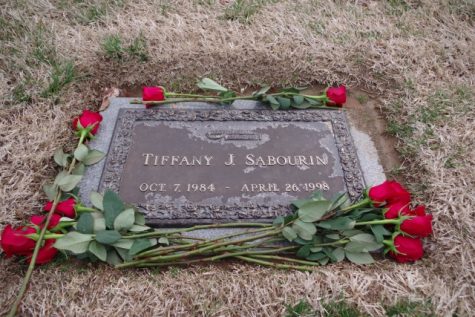
Photo by Kat Owens
Richter said being involved in the case made him rethink his plans to become a gym teacher. He changed his major to criminal justice and became a St. Louis County police officer after he graduated.
“I was more intrigued by what could go on in law enforcement than I was at that time in physical education,” Richter said.
He joined the U.S. Marshals within a year after becoming an officer.
As for Banas, he thinks of the case every time he boards his boat, named after the newspaper headline that was used to describe Shipman’s conviction: “Justice Served.”
“It was a case you’ll never forget because it was my first, and it was a 13-year-old girl,” he said.
Tiffany’s friends and family wonder what would have become of the confident girl they admired if she hadn’t met Shipman that night.
“This rocked us, but we got through it,” Craig said, “I wonder what 30-year-old Tiffany would be like.”
Her stepmother said it came down to Tiffany being in the wrong place at the wrong time.
“In the right setting, she would have flourished and been successful; I just know it,” Higgins said.



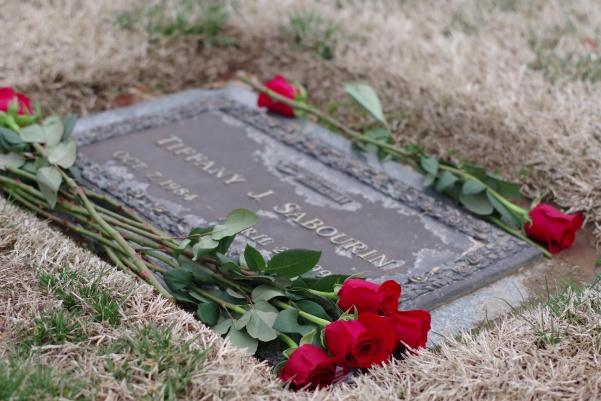
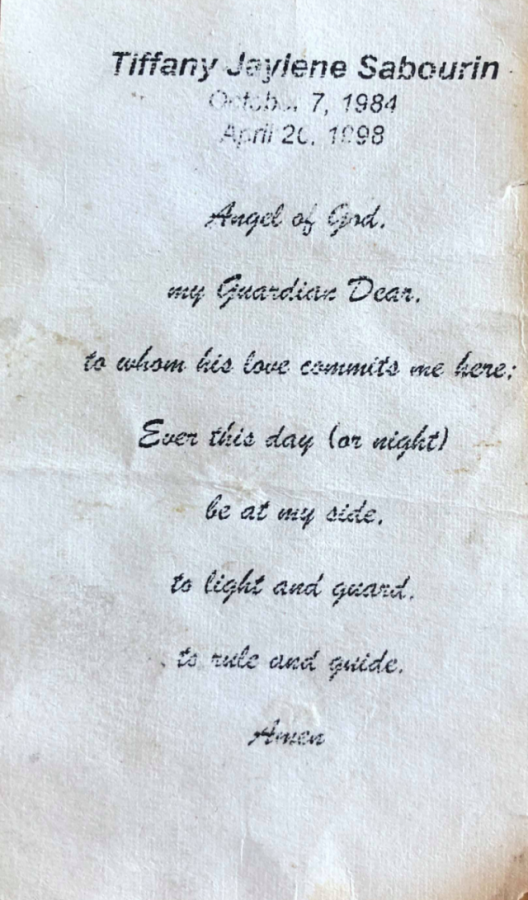
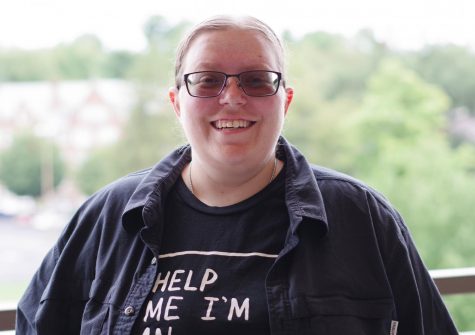


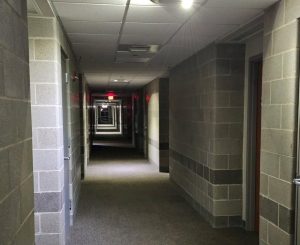



Steve Lindsey • Oct 16, 2019 at 8:56 pm
Wow. Written by a student reporter? Impressive. Very. This should be shipped around to other student newspapers as an example of what to aspire to. I hope the reporter found work in a large city daily.—SWL